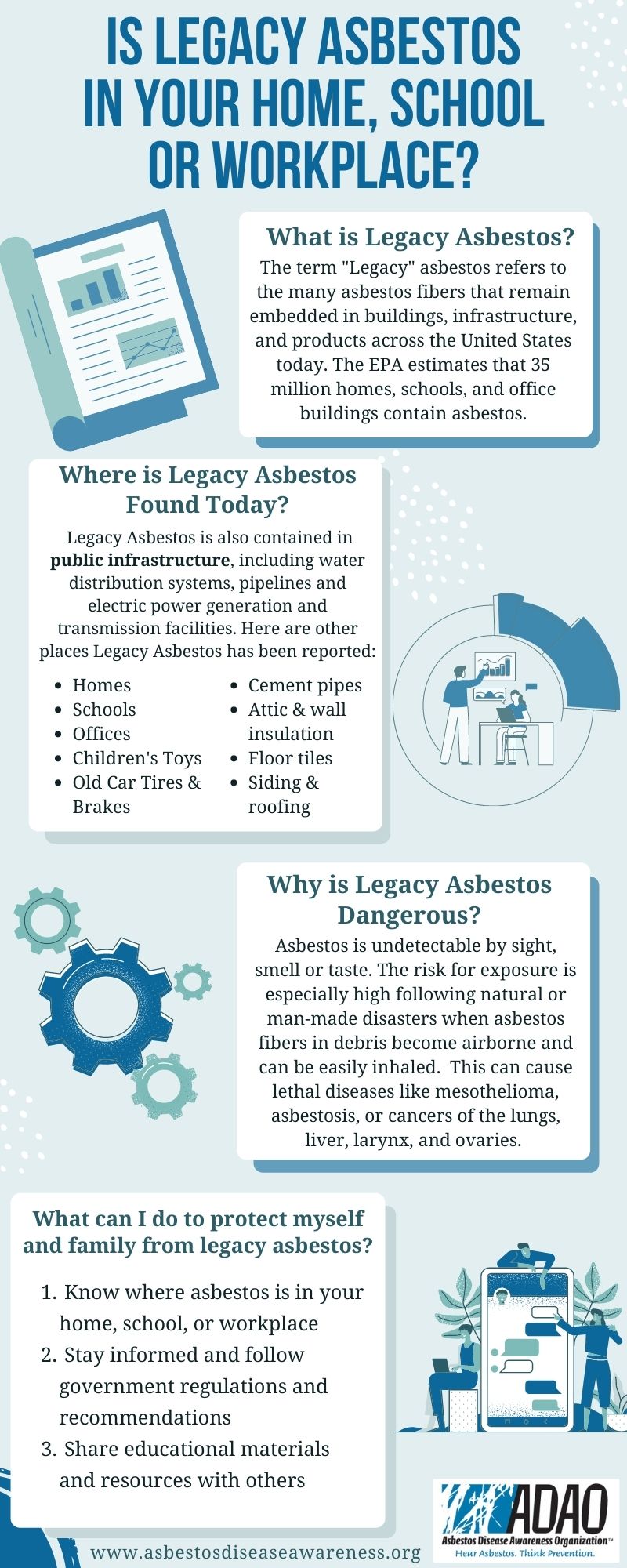Posted on April 26, 2022
Asbestos, the hidden killer, the lethal carcinogen, claims the lives of over 40,000 Americans every year.
“Legacy” asbestos refers to the many asbestos fibers that remain embedded in buildings, infrastructure, and products across the United States today. Without a ban, millions of buildings around the country still contain asbestos, contributing to the legacy asbestos problem in the United States. Even buildings constructed in recent decades may contain asbestos, putting unknowing workers, children, and the average American at risk of asbestos-related disease in their own homes.
While most Americans don’t even know that asbestos has not yet been banned in the country, even more are unaware of the legacy asbestos lurking in our surroundings. The U.S. currently lacks mitigation and regulation on the use and disposal of legacy asbestos.
Here are 10 important facts you need to know about legacy asbestos:
- Legacy asbestos can be found in millions of homes, schools, and workplaces. It remains embedded in buildings, infrastructure, and products across the U.S.
- Fires, extreme weather events, and other disasters result in substantial elevated exposure to legacy asbestos.
- The risks legacy asbestos poses to teachers, students, and staff in schools and colleges are well-documented, widespread, and significant.
- A 2015 study found that the majority of states do not appear to be systematically monitoring, investigating, or addressing asbestos hazards in schools.
- Environmental releases from disposal of asbestos-containing debris from construction projects, abandoned buildings, public infrastructure and disaster sites are a significant source of exposure.
- The last time EPA did a legacy study was nearly 40 years ago, in 1984. That study found one-fifth of all public and commercial buildings had asbestos-containing materials.
- Release of asbestos fibers when asbestos-containing material (“ACM”) is disturbed or damaged contributes to elevated exposure and health risk.
- Legacy uses and associated disposals: handling, maintaining, repairing and disposing of legacy asbestos in buildings, factories, products and articles present an unreasonable risk of injury to human health and the environment.
- A 2013 NIOSH study of firefighters found that “the population of firefighters in the study had a rate of mesothelioma two times greater than the rate in the U.S. population as a whole.”
- Asbestos is also contained in public infrastructure, including water distribution systems, pipelines and electric power generation and transmission facilities.
Asbestos is a known carcinogen and has not yet been banned from the U.S., nor are there any standardized procedures proposed to safely remove legacy asbestos from current structures and products. The time to ban asbestos is NOW.
Linda Reinstein
Social Networks
